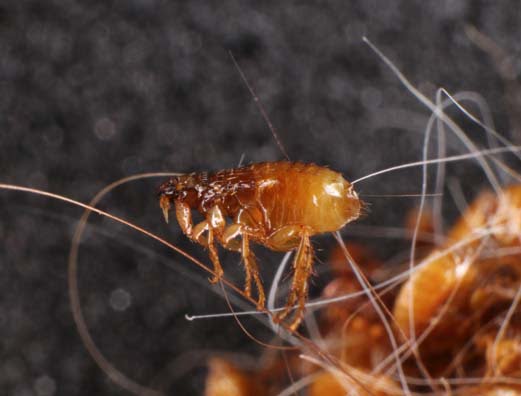Just be thankful we don’t have jigger fleas (also known as sand fleas), a microscopic flea which burrows under the skin! Just be careful if you’re in Africa or South or Central America.
In this a blog I’ll share with you how to tell if you have a flea infestation, along with other common questions about fleas.
For pets, a flea infestation is first spotted through regular scratching, which can lead to hair loss and skin irritation. Many pets are allergic to flea bites, in which case their skin well become flakey, enflamed and may even bleed.
On people, flea bites usually cause tiny red bumps that are in lines or clustered together. You may also develop a rash if you are allergic. While flying insects bite exposed skin, fleas will attack skin that is concealed or covered by clothing. Common bite sites are your armpits, groin and the inner side of elbows and knees.
The other thing to look for is “flea dirt” which is, disgustingly, dried blood that has been excreted by fleas. At a glance, this looks like ordinary dirt but will turn red when placed on a wet paper towel.
You should regularly use a flea comb on your pets to check for adult fleas or their excrement.












